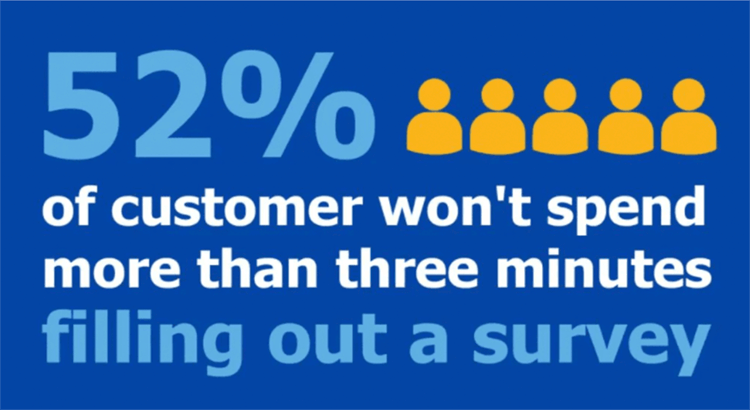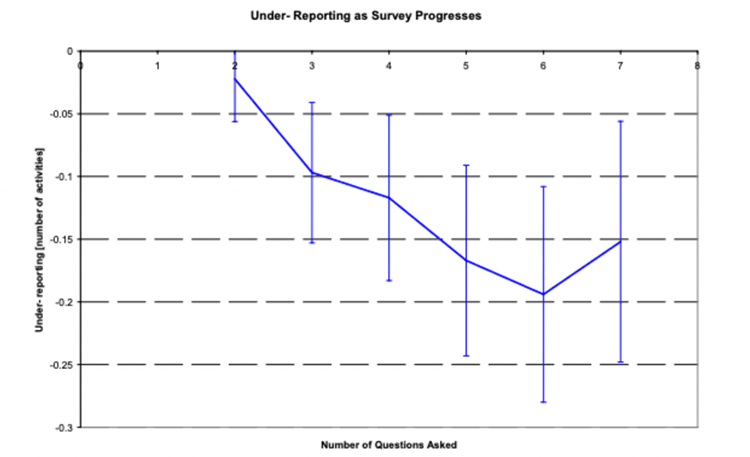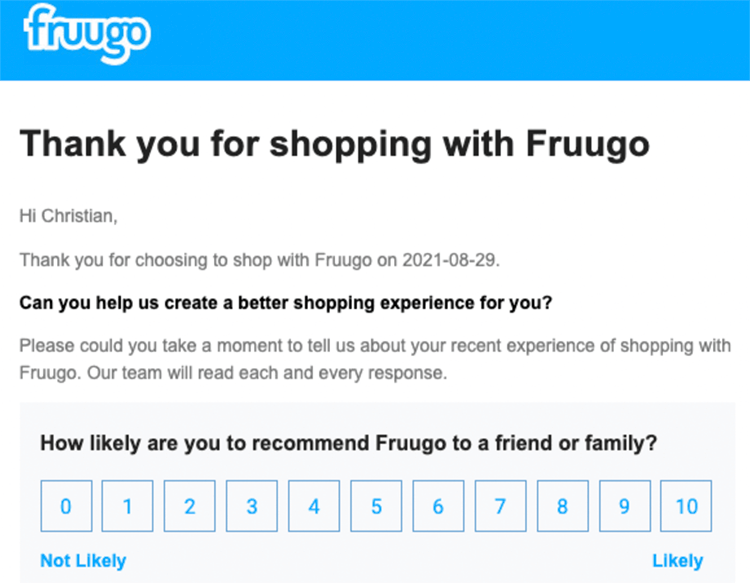Surveys are a popular and effective way for companies, organizations, and individuals to gauge the opinions of their target audience, get customer insights, and decide on critical business decisions.
As such, surveys can be an important tool in measuring customer satisfaction or gauging public opinion on hot topics or issues. Surveys questions come in several types, but the two main types are open-ended and closed-ended questions.
This article will explore what these question types are, how they affect your survey data collection efforts, and how you should use each type of questionnaire so that you can make the most out of your survey results!
Closed Vs. Open-Ended Questions
The best way to understand what is the difference between these types of questions is to look at several examples. Using these examples you'll be able to see easily what differentiates the 2 types.
Closed-Ended Questions Examples:
How old are you?
What is your favorite color?
Are you married or single?
Which social media platforms do you use the most?
Open-ended Questions Examples:
Describe what makes your business unique and what sets it apart from others?
How does it make an impact on people's lives and solve problems for them?
What are your thoughts on...?
How do you feel about...?
What's your opinion on...?
Benefits of Closed-ended Questions
When it comes to surveys , closed-ended questions are often better because they produce results that are easier to quantify and analyze. This is especially true if you're looking for a simple yes or no answer, or want respondents to rank items on a scale.
Open-ended questions can be great for getting qualitative data, but analyzing this information takes significantly more time and effort as the answers can vary wildly.
Additionally, closed-ended questions tend to generate responses more quickly than open-ended ones – which can be important when you're running a survey with a tight deadline.

A survey taker is more likely to fill out a quick and easy survey over having to make the effort of thinking about an answer, which may result in much lower response rates.
Finally, closed-ended questions are typically less ambiguous than open-ended ones, making them less likely to lead to misinterpretation or confusion.
When to Choose Closed-ended Questions?
When choosing between closed-ended and open-ended questions, consider the following:
Do I Need Specific Detailed Responses?
When you want to collect specific responses from your survey respondents, closed-ended questions help ensure that all participants answer the question, in the same way, making it easier to analyze and compare results.
Do I Need a Large Number of Responses?
When you need a large number of survey responses for your analysis, open-ended questions can produce more varied responses, but they also take more time for participants to complete. Closed-ended questions are typically quicker and easier for people to answer which may lead to more surveys completed.
Do I Need Opinion-based Responses?
When you want to focus on opinion or attitude rather than detailed information about someone's experience or behavior, open-ended questions can solicit long, detailed responses, which might not be relevant to your research question. Closed-ended questions are better suited for obtaining specific information.
No matter if you choose to use close-ended questions or open-ended, beware of going overboard and asking too many questions in one single survey, as a study made by Stanford University has proven that survey fatigue kicks in rather quickly.

A good way to offset this might be to include some kind of incentive to increase the survey response rates.
What is a Good Survey Question?
As you can see there are a few different ways on how to approach your surveys with different types of questions, but underlying all of this is the core principles that you should keep in mind:
Your goal with the survey questions should be to get a clear understanding, valuable insights, and solid data about your customer's problems, needs, and desires.
These can include questions such as:
1. Who is your ideal customer persona
2. What is your target market
3. What are the audiences main points of problems or frustrations
4. What are their key wants and needs
5. What are the common objections to buying your product
6. Why visitors to your website is not taking the CTA
7. Is your product or service pricing on point?
With that being said, now that you understand the difference between open and closed-ended questions, let's take a look at some tips for creating good survey questions:
Keep your questions clear and unambiguous: Make sure that everyone who takes the survey will have a consistent understanding of what you're asking.
Avoid bias: Ambiguous words can create problems with respondents interpreting the question differently than intended, leading to biased data collection results.
Consider using rating scales or Likert-type scales for measuring opinions: Scales are good at showing how people feel about different topics because they allow them to easily share their level of agreement on a specific issue. You can also try out using the well-known NPS scale.

Be careful with double-barreled questions: These types of questions ask more than one thing in each question, which can make it hard to get accurate responses from participants since they'll be confused by trying to answer two (or more) things at once.
Make sure questions are relevant to your research: Don't ask about things that aren't related to your study – this can lead to irrelevant data and wasted time for participants.
Examples of Closed-ended Questions
Below you'll find some great closed-ended examples to consider and take inspiration from when surveying customers for your marketing campaigns.
Market Research Survey Questions
What is your age?
Are you married?
Do you have children?
What is your occupation?
How much money do you make per year?
Where do you live?
Do you use Facebook?
How often do you purchase this type of product?
Sales & Marketing Survey Questions
When did you first purchase this product/service?
How likely are you to purchase a product from us again?
Did you find our website easy to use?
Which marketing campaign was most effective in persuading you to purchase from us again?
On a scale of one to ten please rate whether or not if today's deal influenced you in making a decision to make a purchase.
Customer Satisfaction Survey Questions
Are you likely to purchase this product again in the future?
Did the quality of our product meet your expectations?
Are you happy with your experience with us?
On a scale of one to ten, how satisfied are you with our product?
Was the price of our product reasonable for the quality received?
What did you think of our company’s customer service?
Did you find what you were looking for today?
Other Types of Survey Questions
Facts Vs Opinions
Facts are objective, while opinions can vary. A factual question would ask respondents to share their views about the weather (e.g., what was the temperature like on Tuesday), while opinion-based questions explore more subjective topics (e.g., how did you feel about that day's forecast?).
Multiple Choice Questions
These types of survey questions allow respondents to select one answer from several listed possibilities; this is useful if you want responses that reflect a majority or at least a plurality of people's thinking or opinions, but you don't necessarily need to know the specific responses that individuals choose.
Yes/No Questions
Yes/no questions are exactly what they sound like – respondents can only select one answer (either yes or no). These types of survey questions allow for easy data collection and analysis; however, there is little room for nuance when it comes to these answers.
Wrapping Up
When using digital marketing tools such as surveys, it's important to use both closed and open-ended questions so that you can capture both quantitative and qualitative data. However, it's also important to keep your audience in mind when choosing which type of question you're going to use.
Open-ended questions are great for gathering detailed responses, but can sometimes lead to respondent fatigue if there is too much text involved or the survey takes longer than expected.
Closed-ended questions, on the other hand, tend to produce more consistent results and take less time for participants – making them easier for people with busy schedules.
When designing your surveys, use both closed and open-ended questions to get a more complete understanding of your customer base.
While it is important to use both closed-ended and open-ended questions, it is also very important to know which questions to avoid in surveys. We have listed here 7 of the worst questions to ask in a survey.
Remember: your customers' time is valuable! Ask only what you really need to know and keep surveys as short and as simple as possible! If you are worried that the response rate will be very low, maybe consider creating an engaging and captivating survey.
You can easily generate quick surveys, using involve.me AI form generator. Just give your detailed prompt and within seconds, the tool will generate a survey for you!
Create your own surveys with AI
Just paste your URL and click generate





